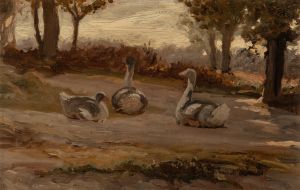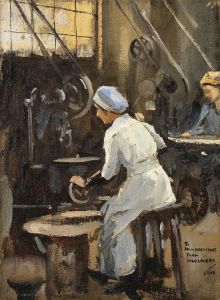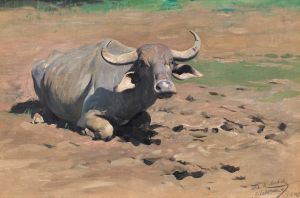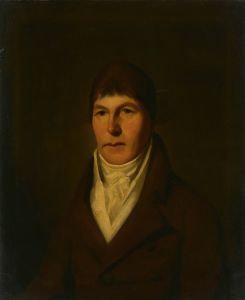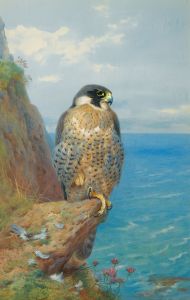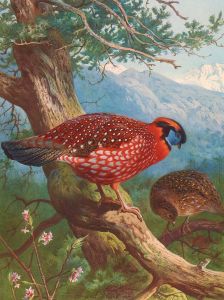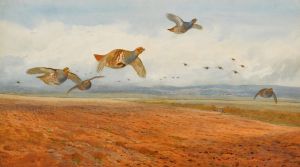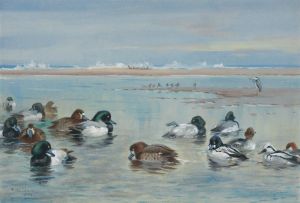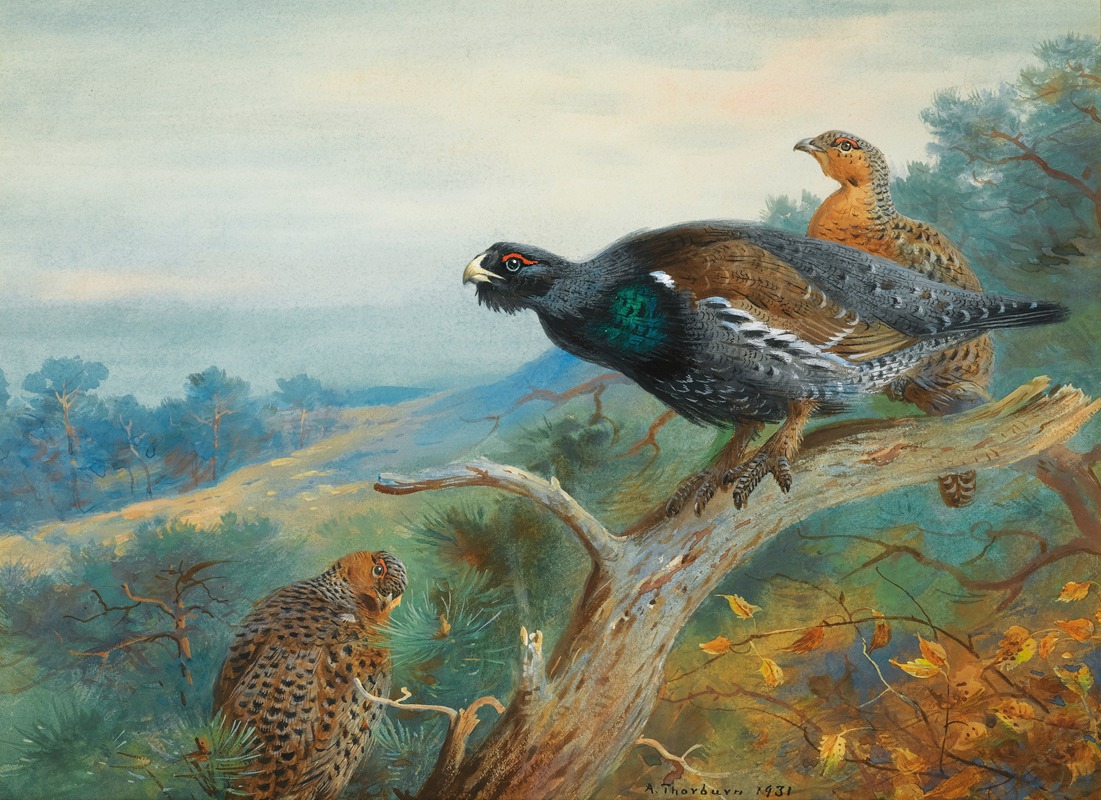
Capercaillie
A hand-painted replica of Archibald Thorburn’s masterpiece Capercaillie, meticulously crafted by professional artists to capture the true essence of the original. Each piece is created with museum-quality canvas and rare mineral pigments, carefully painted by experienced artists with delicate brushstrokes and rich, layered colors to perfectly recreate the texture of the original artwork. Unlike machine-printed reproductions, this hand-painted version brings the painting to life, infused with the artist’s emotions and skill in every stroke. Whether for personal collection or home decoration, it instantly elevates the artistic atmosphere of any space.
Archibald Thorburn's painting Capercaillie is a notable work by the renowned Scottish artist and ornithologist, celebrated for his detailed and lifelike depictions of wildlife, particularly birds. Thorburn (1860–1935) was one of the most prominent wildlife painters of his time, and his works are highly regarded for their accuracy, vibrant use of color, and ability to capture the natural behavior and habitats of his subjects.
The painting Capercaillie features the capercaillie, a large woodland grouse native to Europe, known for its striking appearance and elaborate courtship displays. Thorburn's portrayal of the bird is a testament to his skill in rendering intricate details, from the texture of the bird's plumage to the surrounding environment. The capercaillie is depicted in a naturalistic setting, likely inspired by the Scottish Highlands, where Thorburn spent much of his life observing and sketching wildlife. His ability to integrate the bird seamlessly into its habitat reflects his deep understanding of both the species and its environment.
Thorburn's work was heavily influenced by his dedication to field observation. He often worked outdoors, sketching directly from nature, which allowed him to capture the essence of his subjects with remarkable precision. This approach is evident in Capercaillie, where the bird's posture and surroundings convey a sense of realism and vitality. Thorburn's paintings were not only artistic achievements but also valuable contributions to the study of ornithology, as they provided detailed visual records of various bird species.
The painting is characteristic of Thorburn's style, which combines scientific accuracy with artistic sensitivity. His use of watercolor and gouache techniques enabled him to achieve a delicate balance between detail and atmosphere. In Capercaillie, the interplay of light and shadow enhances the three-dimensional quality of the bird and its environment, drawing the viewer into the scene.
Thorburn's works, including Capercaillie, have been widely appreciated by art collectors and naturalists alike. His illustrations were featured in numerous books and publications, such as British Birds by Lord Lilford and Thorburn's Birds, which further cemented his reputation as a leading wildlife artist of his era. Today, his paintings are held in high regard and can be found in private collections, museums, and galleries.
Capercaillie exemplifies Thorburn's lifelong passion for wildlife and his commitment to portraying it with authenticity and artistry. His legacy continues to inspire both artists and naturalists, and his works remain a significant part of the history of wildlife art.





